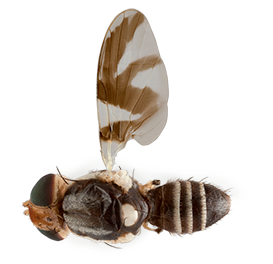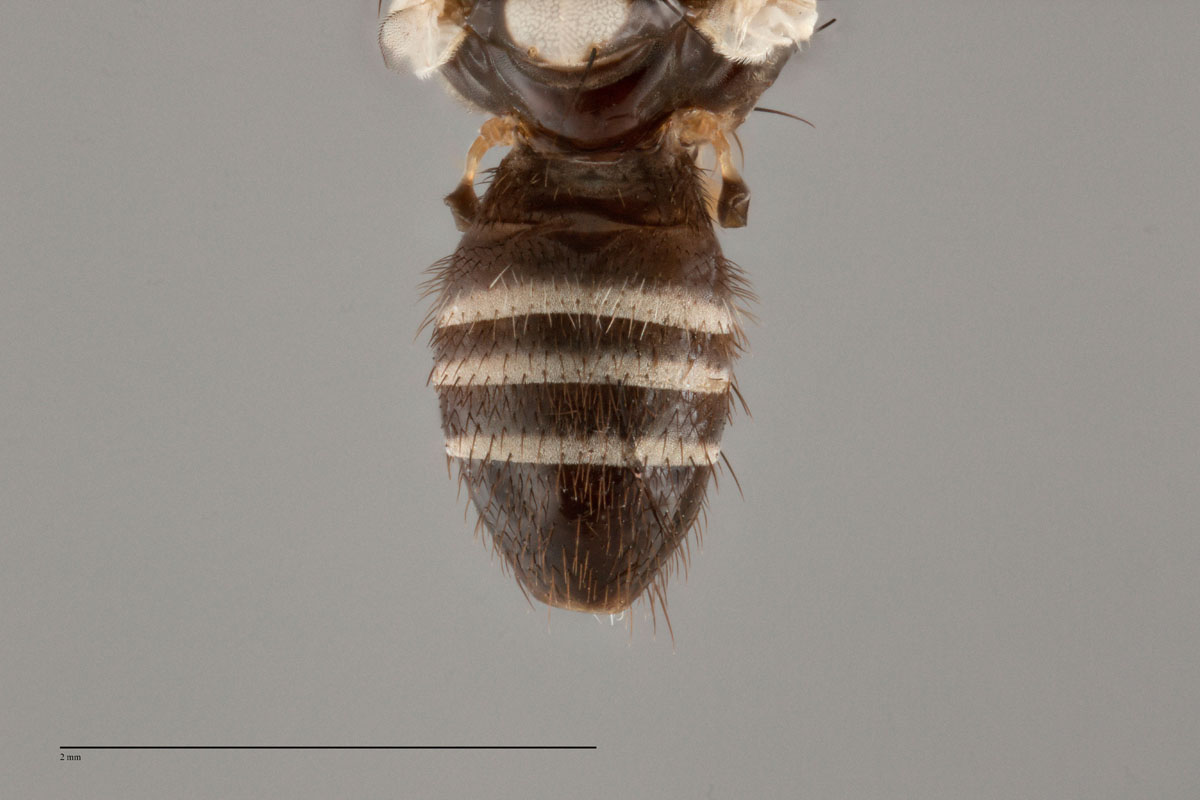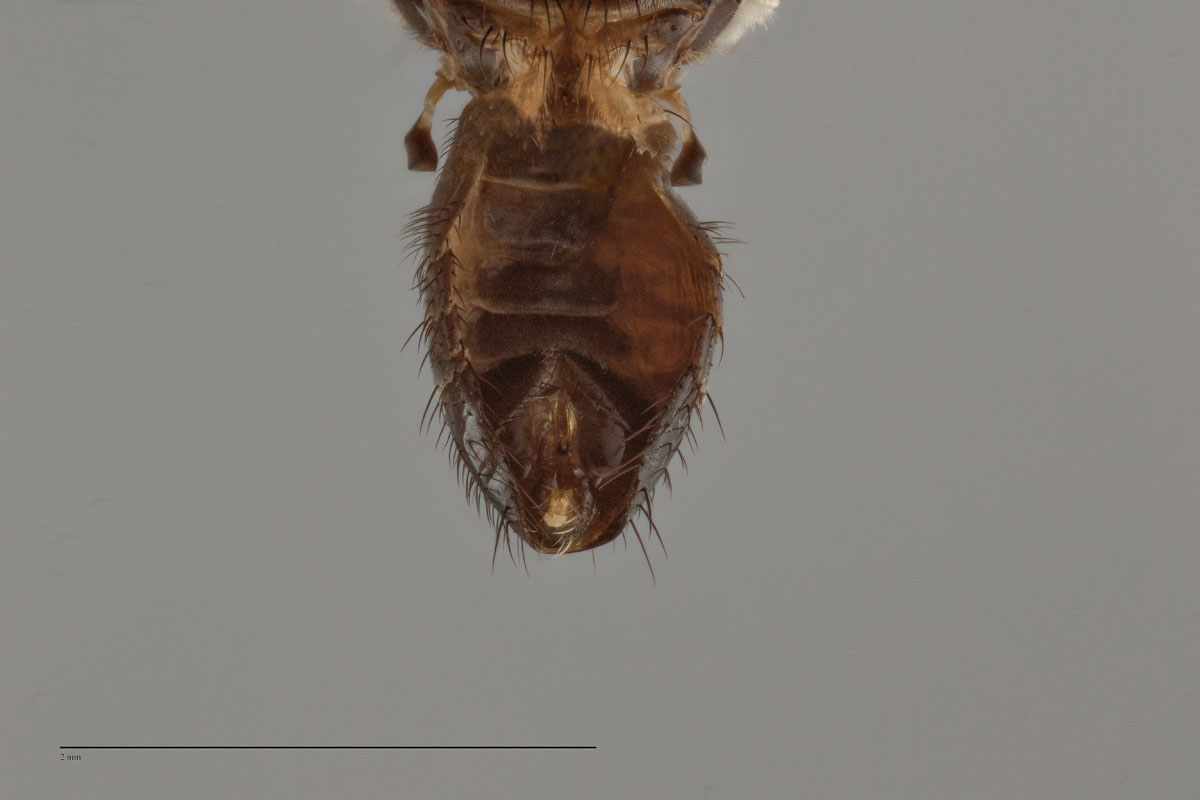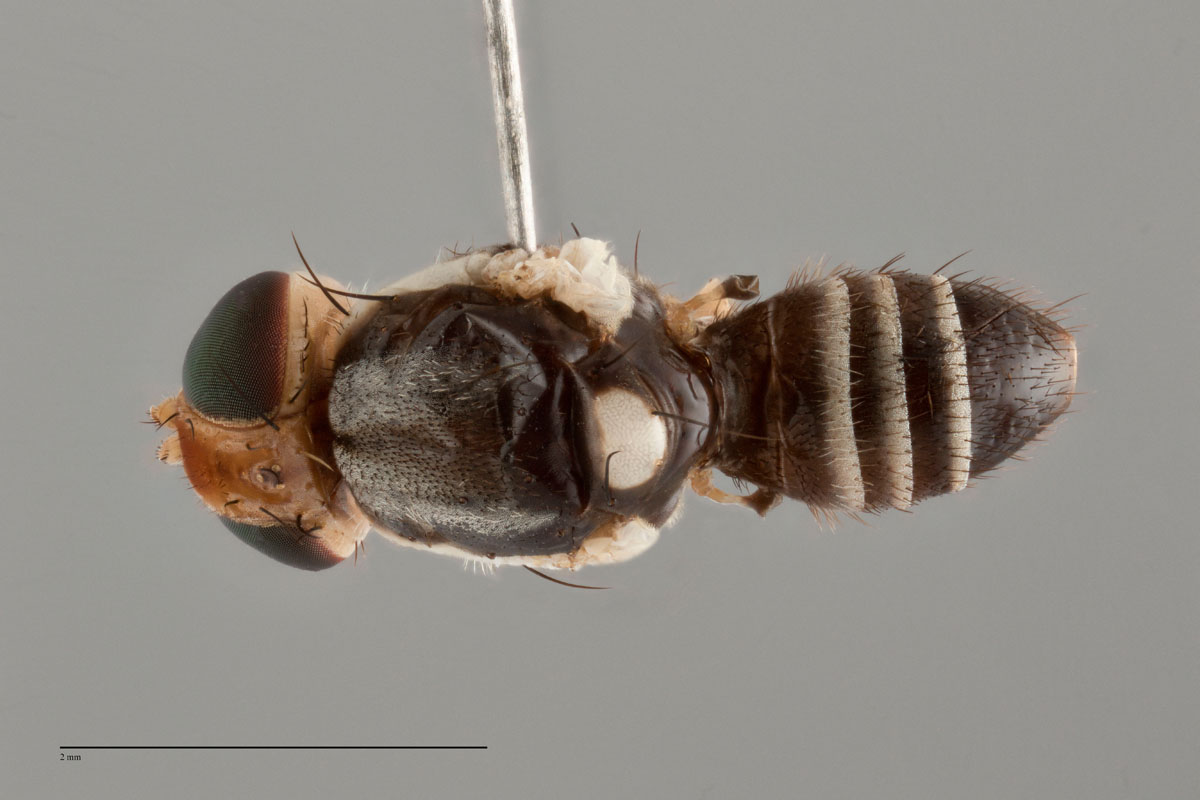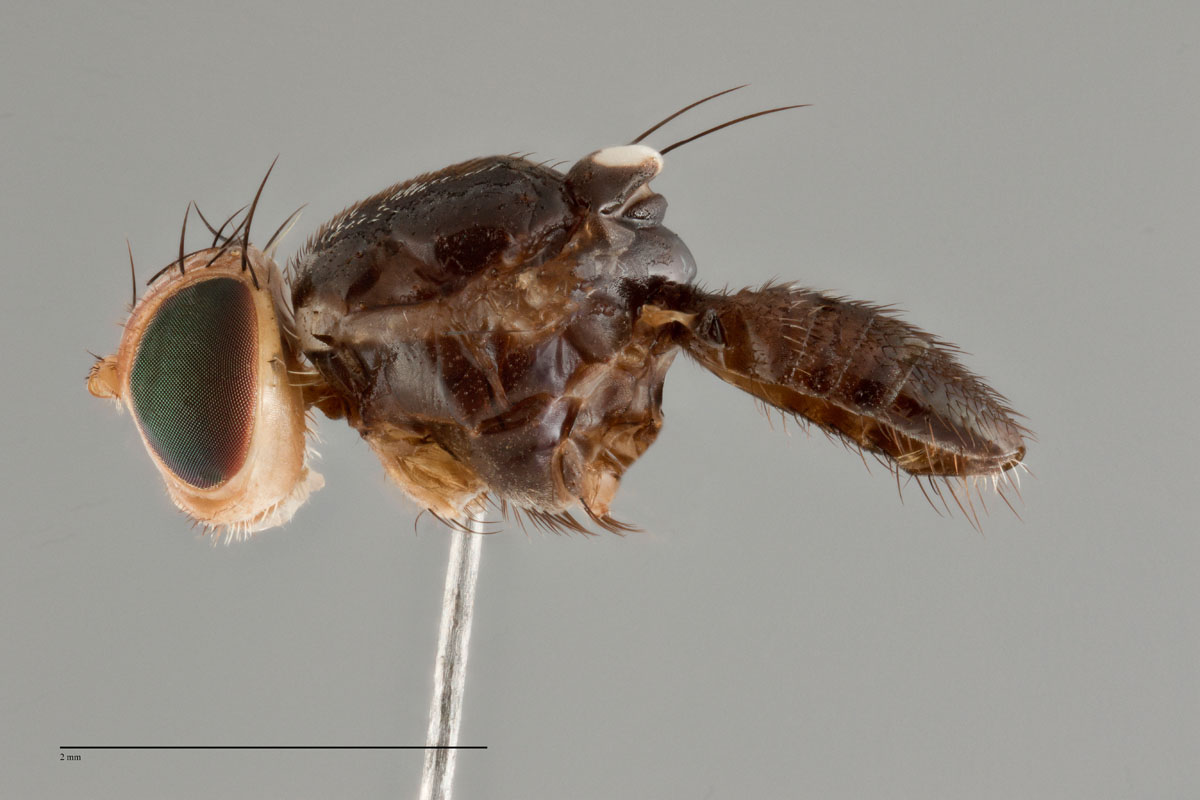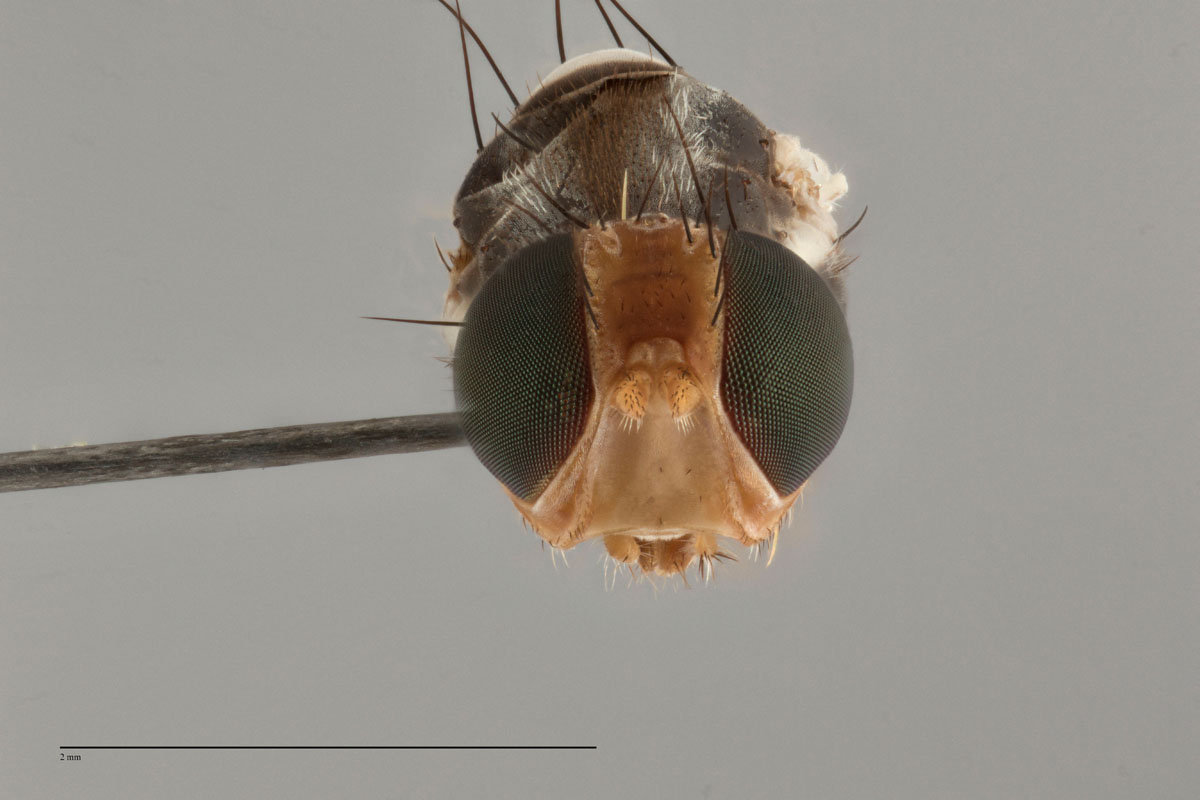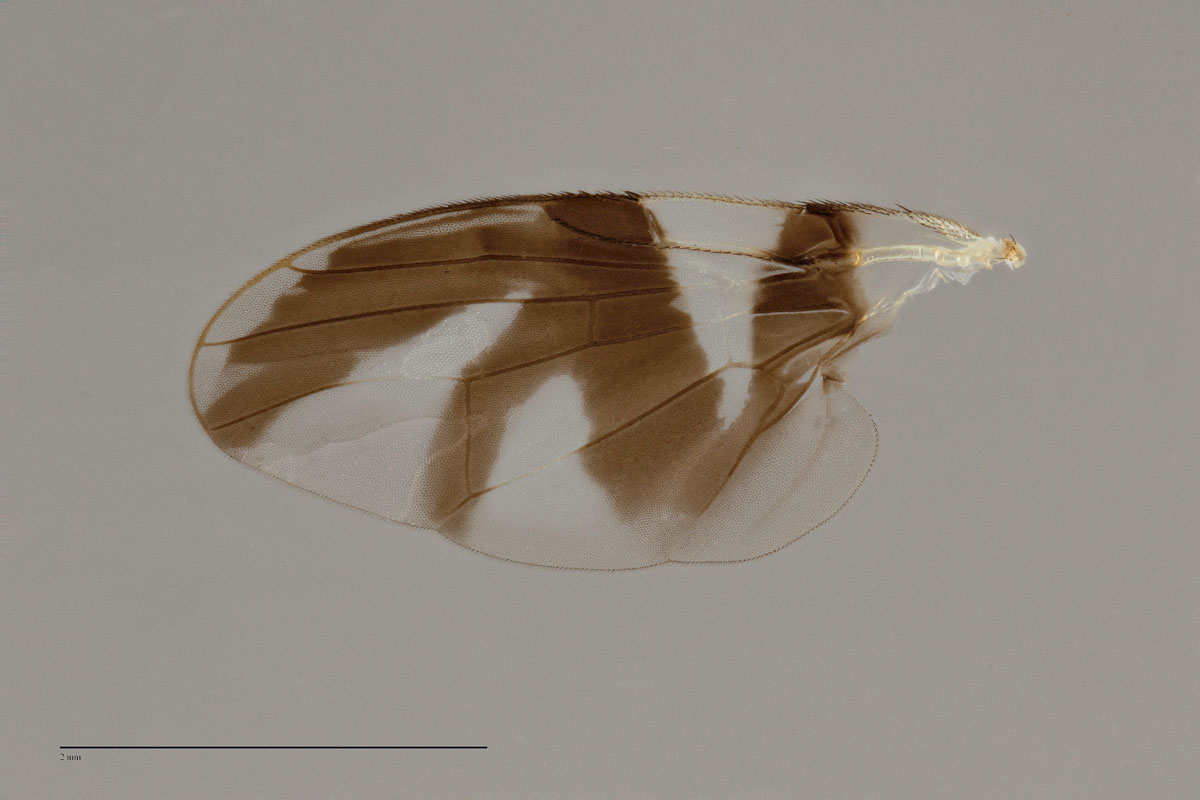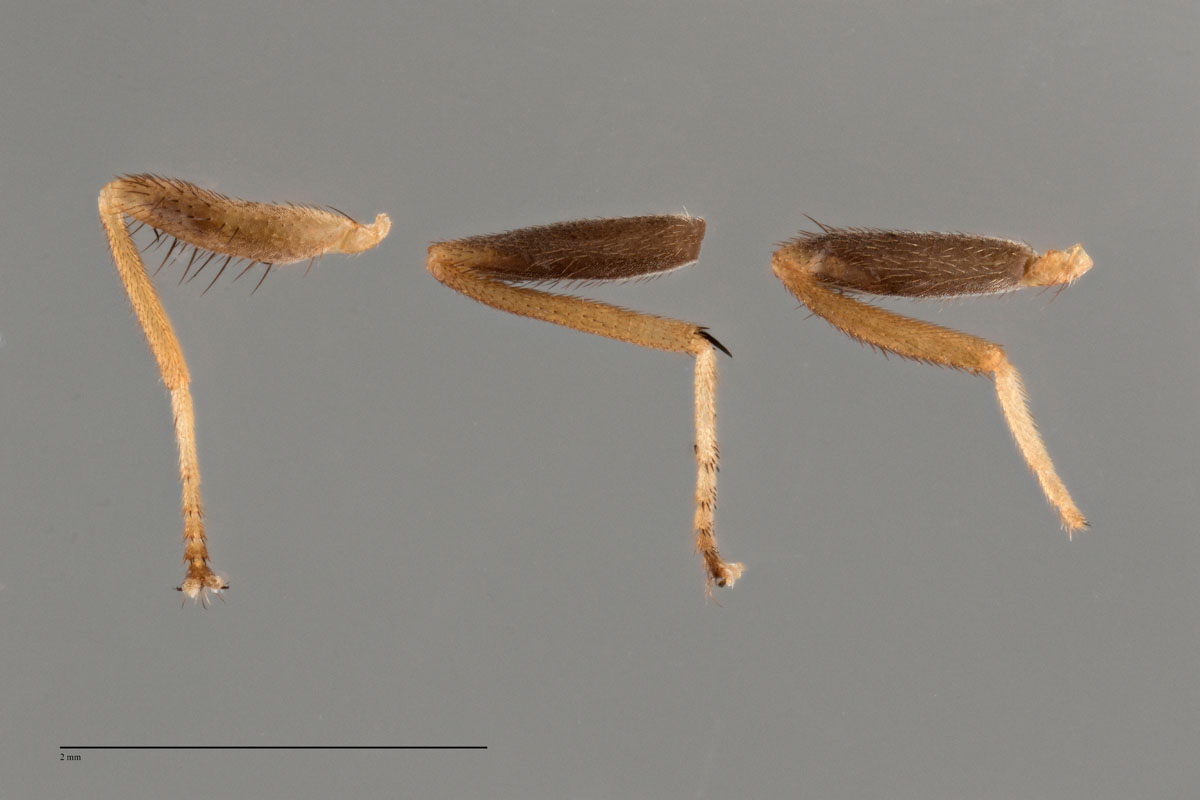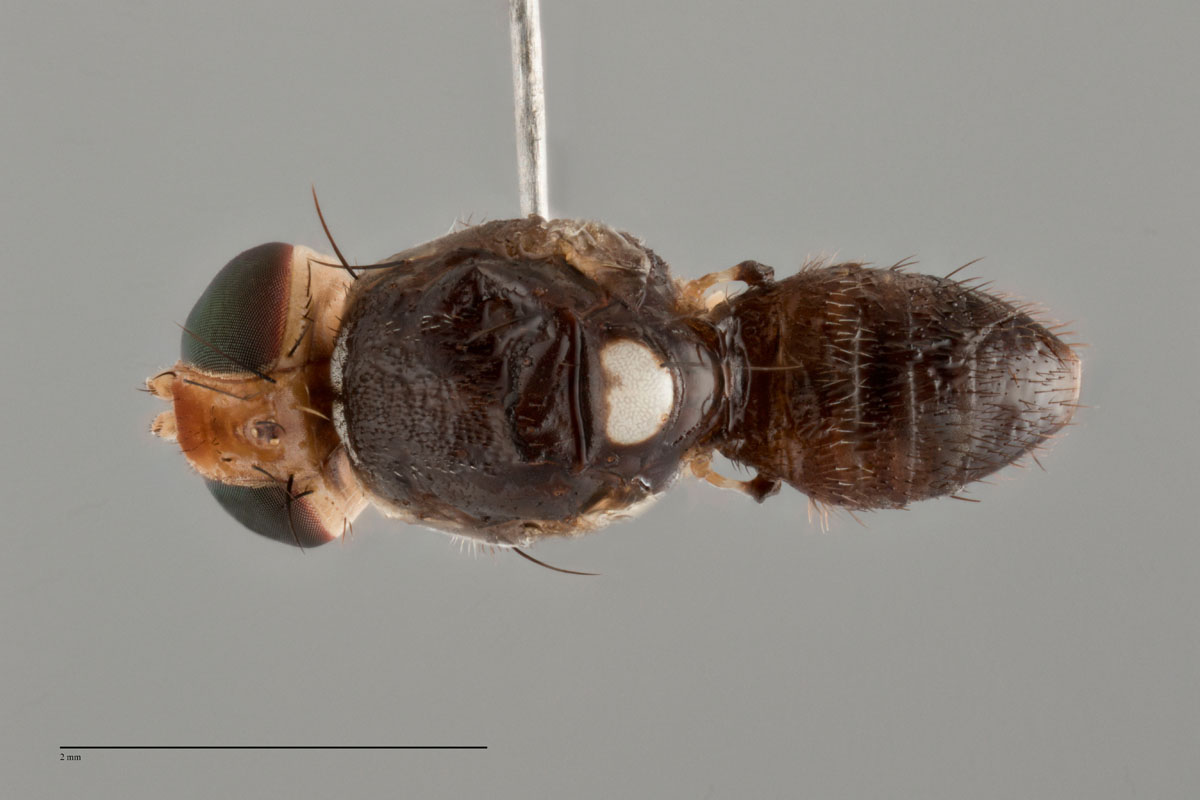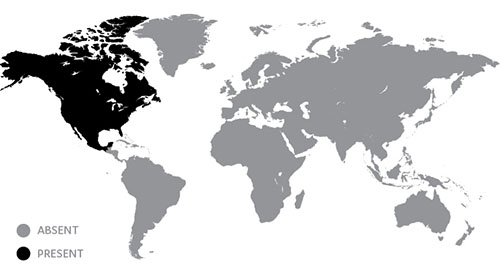Diagnosis
Morphological – adult
Rhagoletis pomonella, together with R. zephyria, R. mendax and R. cornivora are among the most readily recognised species of Rhagoletis by virture of their wing pattern, which consists of a slightly oblique discal band to which the anterior and posterior apical bands are connected, forming a characteristic F-shaped pattern in the apical half of the wing. The absence of the subapical band distinguishes the species of the pomonella group from all other species of Rhagoletis. Rhagoletis striatella, which also has an F-shaped apical wing pattern, is distinguished from R. pomonella by the colour pattern of the scutellum and the additional characters given in the key to species.
Rhagoletis pomonella is separable from the other three species of the pomonella group by the presence in most specimens of heavy black shading on the posterior surface of the fore femur, and, in specimens from the northern part of its range, by a generally larger body size and by the longer aculeus (0.90-1.49mm). In the southern part of its range, specimens of R. pomonella generally are smaller than in the north. For that reason and because of a consequently shorter aculeus, females are not separable from those of R. mendax and R. cornivora by the use of morphological characters. Mexican specimens of R. pomonella resemble those that occur in the United States and Canada but generally are larger and possess a light spot near the base of the apical wing band (Foote, Blanc and Norrbom 1993).
Morphological – larvae
Not available/included in this edition.
Molecular
DNA barcoding
DNA barcoding: BOLD reference data available, but cannot be distinguished from R. mendax.
PCR-RFLP Test 1
BsrI: Data not available
HinfI: Data not available
HhaI: Data not available
Sau3AI: Data not available
SnaBI: Data not available
SspI: Data not available
Vspl: Data not available
PCR-RFLP Test 2
HinfI and RsaI are fully diagnostic; DraI also has some diagnostic value.
HinfI: 640, 260,190,150, 110, 80, 70
